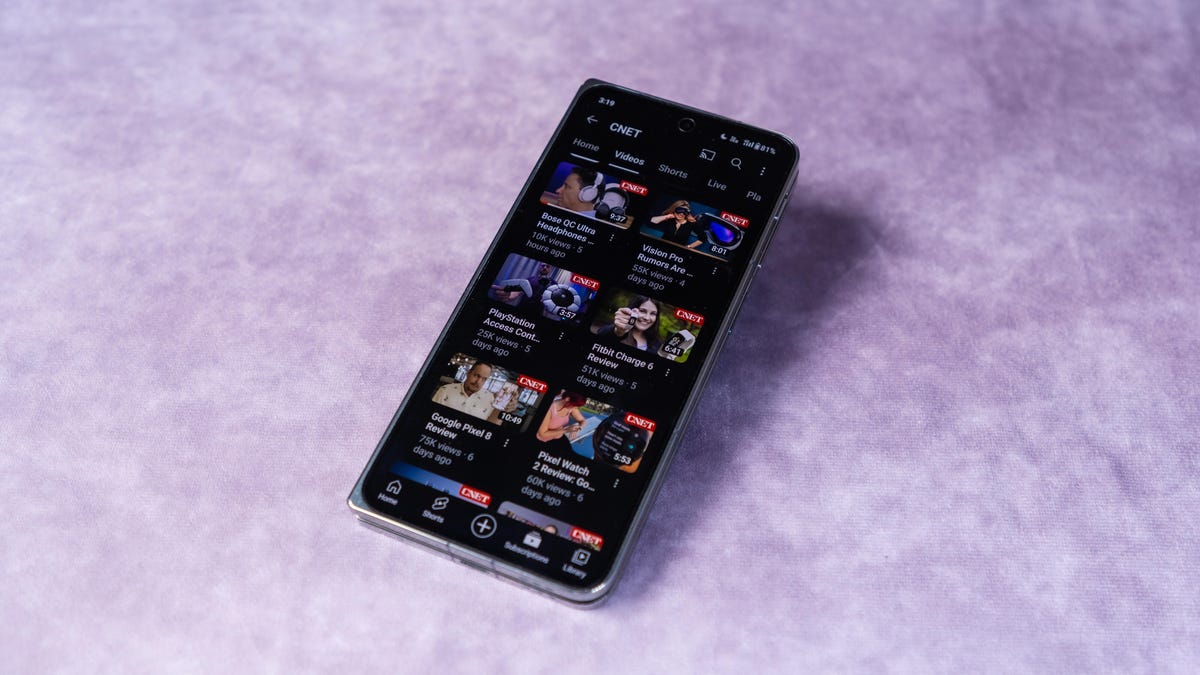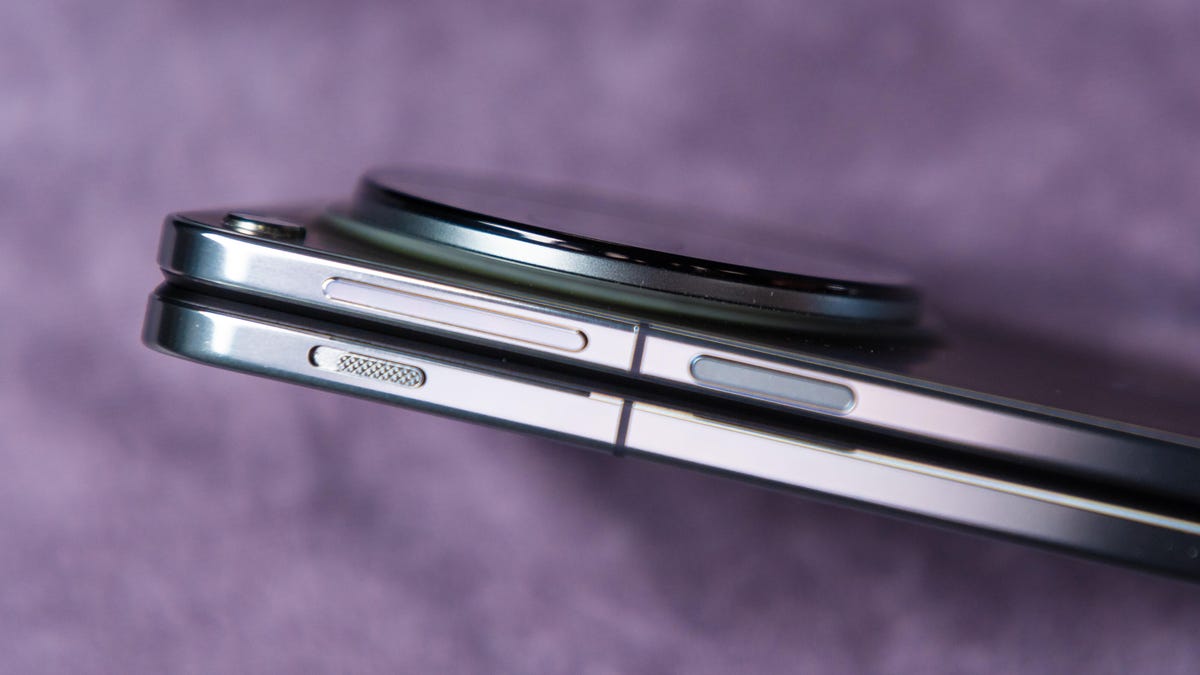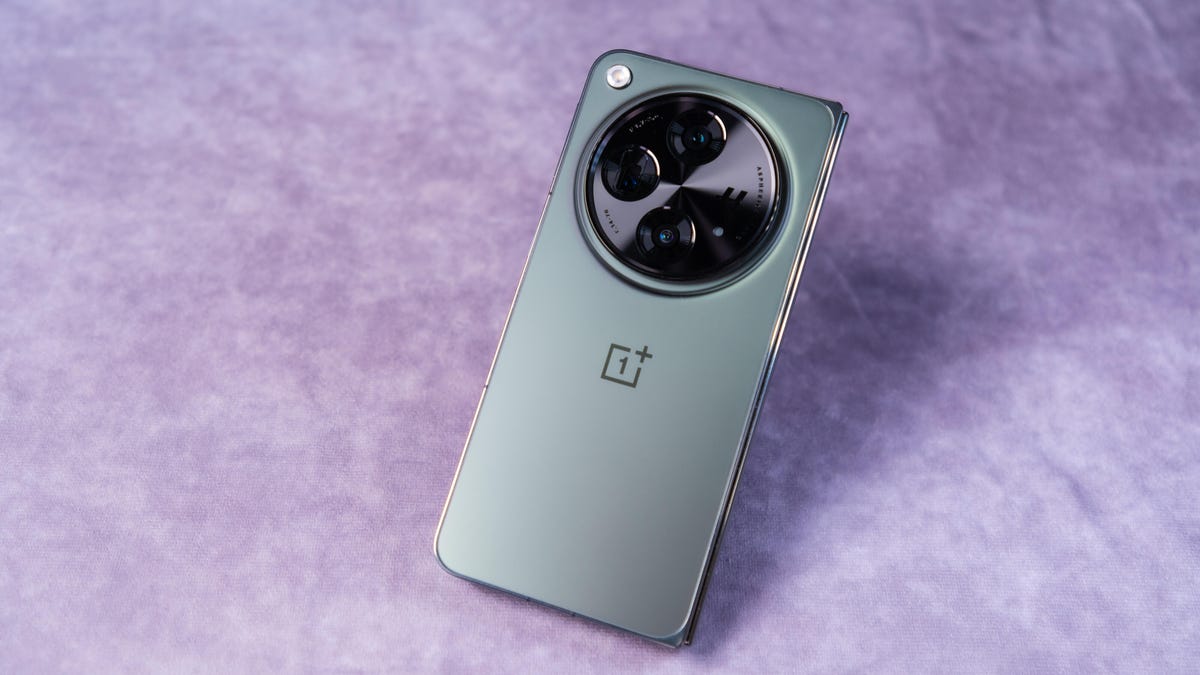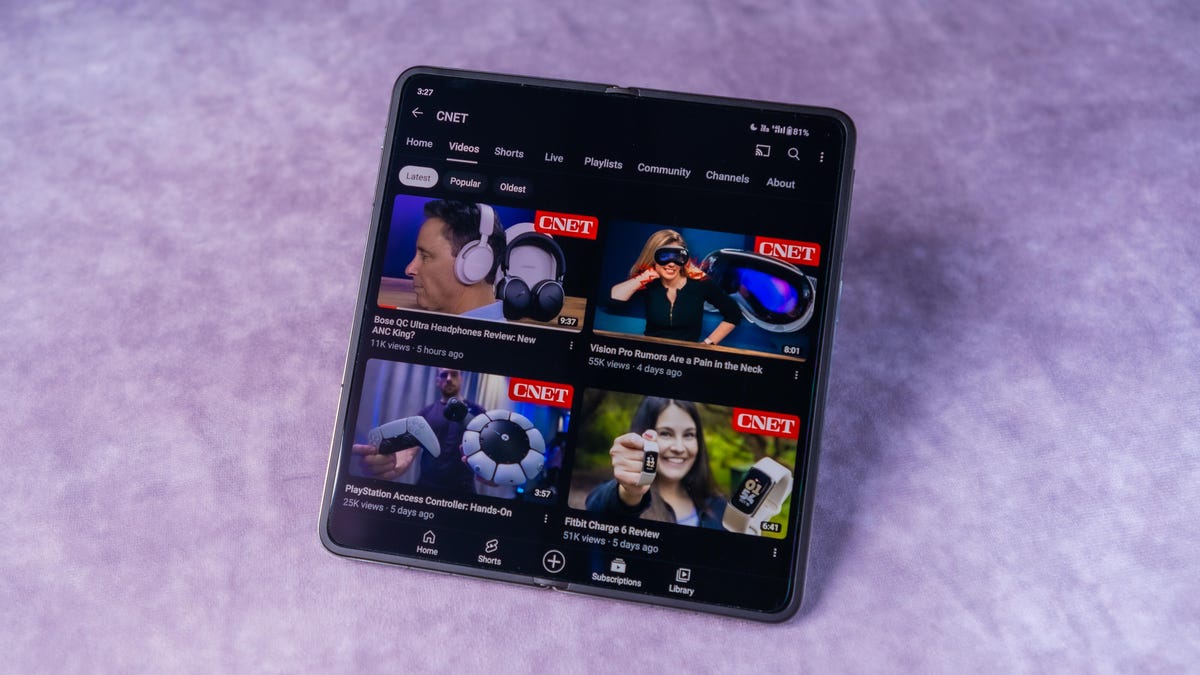OnePlus built its brand on the idea of “never settling” for compromises from your phone. Its first foldable, the $1,700 OnePlus Open, certainly delivers on that premise with impressive hardware (even with a few bizarre omissions). But its software and value, particularly in the US, make it a hard sell compared to established foldables like Samsung’s Galaxy Z Fold 5.
After testing the phone for a few weeks, I commend OnePlus for a strong first effort, particularly when it comes to the hardware. But even with OnePlus’ aggressive trade-in offer that knocks a minimum of $200 off the Open’s price with a trade-in of any phone (even an old or broken one), it’s hard to compete with carrier discounts that cut $800 or more off of rival devices with a trade-in and financing plan. That’s a solid deal, especially considering Samsung’s software is far more optimized for foldable displays.
Those considering the Open should be encouraged to see OnePlus adding some much-needed competition to the US foldable arena. But they also may want to look elsewhere or wait for the second-generation model before spending so much money.
Note: Oppo, OnePlus’ sister company, has released a similar version of this phone internationally under its Find N-series line of foldables. This review is of the OnePlus version that will be available in the US.
What’s good: The hardware

Design-wise, the OnePlus Open is more of a hybrid between Google’s Pixel Fold and the Z Fold 5. The 6.31-inch front screen isn’t as wide as the Pixel’s 5.8-inch display, but it is significantly more comfortable to hold and use than Samsung’s 6.2-inch screen on the Z Fold 5.
There’s a 7.82-inch display on the inside, which is slightly larger than Google and Samsung’s 7.6-inch options. Both the front and interior screens are vibrant OLED panels capable of 2K resolution, and they each support variable refresh rates up to 120Hz. The larger tablet-size display is capable of going all the way down to 1Hz, which can allow for smoother scrolling and gaming, or more efficient battery life (the front display can go down to 10Hz).
What impressed me the most about the hardware is how thin OnePlus has made the Open, and how the company seems to have almost completely minimized the larger display’s crease.

The phone is thinner than both Samsung’s and Google’s foldables. While I can still feel the crease and can see it at certain angles, I generally didn’t notice it while browsing around Chrome, messaging in WhatsApp or navigating with Google Maps during the day or watching YouTube or Loki on Disney Plus at night.
I did notice that some videos seemed less sharp on the OnePlus’ display than watching on other devices like an iPhone 14 Pro Max, though turning on some additional video settings (like “video color boost” and “bright HDR video mode”) did help.
The Dolby Atmos-capable speakers are fine and clear, though I do wish they got a bit louder. And despite being thinner than its rivals (my emerald dusk green version measures 11.7mm thick when folded and weighs 245 grams, a voyager black variant measures 11.9mm and weighs 239g), OnePlus staples like the alert slider remain, and there is a fingerprint sensor integrated in the sleep/wake button on the right side of the device.
The OnePlus Open closes completely without any wedges, a feat that took five iterations for Samsung to accomplish.

Opening up the Open is easy and effortless. The hinge doesn’t require the same amount of force I’ve had to use on other foldables, like the Pixel Fold or Z Fold 5. I’ve only had the phone for a few weeks and obviously can’t predict how this will last over months or years, but my early impressions are encouraging.
If your phone does have issues, OnePlus says you’ll need to reach out to them directly as opposed to using any specific repair shops in the US.
The company tells CNET that in addition to its normal warranty, “we will bring in insurance services like OnePlus Care and will introduce a new service of exchanging a device instead of repairing the original.” OnePlus adds that the new service will run $99 and that “if customers need any repairment under the standard warranty policy, OnePlus will replace it to a new or refurbished device.”
OnePlus will also be offering a “60% discount on this price when buying a device at launch on Oct. 26.”
Benchmarks, battery and interesting hardware choices
Like the Z Fold 5, a Qualcomm Snapdragon 8 Gen 2 processor runs the show, though OnePlus ups the RAM to 16GB compared to Samsung’s 12GB on the Z Fold 5 (there is only one storage option for the Open, 512GB). Performance is zippy, with apps opening quickly.
The phone supports 5G on AT&T, Verizon and T-Mobile’s respective networks, and I had no issues when popping an AT&T or T-Mobile SIM card into the device. No US carrier will be selling the Open directly, however, though OnePlus will be selling the phone unlocked from its website as well as Amazon and Best Buy.
For benchmark fans, here is how it stacks up in our tests:
Benchmark testing results
| Phone | Geekbench 6 single-core | Geekbench 6 multicore | 3D Mark Wild Life Extreme |
|---|---|---|---|
| OnePlus Open | 1,571 | 4,556 | 3,641; 21.80 fps |
| Samsung Galaxy Z Fold 5 | 2,014 | 5,419 | 3,708; 22.20 fps |
| Samsung Galaxy S23 Ultra | 1,892 | 5,009 | 3,802; 22.8 fps |
| Samsung Galaxy Z Fold 4 | 1,842 | 4,508 | 2,777; 16.60 fps |
| Google Pixel Fold | 1,458 | 3,540 | 1,733; 10.4 fps |
Finally, OnePlus made a few interesting choices on the hardware side. First, there’s the battery.
The 4,805-mAh cell provided impressive battery life and regularly lasted throughout the day even when watching plenty of videos, snapping photos and WhatsApp-ing. I often relied on the larger internal screen for most of these tasks.
In a bit of a break from the norm, OnePlus includes a 67-watt charger in the box (albeit one that is USB-A to USB-C). That wired charging took me from empty to 25% in under 8 minutes, around 43% after 15 minutes, and up to 50% in around 18 minutes. A 30-minute charge got me from empty to 76% and getting to 100% took less than 44 minutes.
Running CNET’s 45-minute endurance test — where I streamed YouTube TV, browsed TikTok, played a few races of Asphalt 9, did a WhatsApp video call, and browsed the web using the larger internal display and while connected to Wi-Fi — the Open fell from 100% to around 88%. This is on par with a similar test on the Z Fold 5, but worse than the Pixel Fold, which only had a 5% drop in battery.
45-minute battery endurance test
| Phone | Battery loss over 45 minutes |
|---|---|
| Google Pixel Fold | 5% |
| Samsung Galaxy S23 Ultra | 6% |
| OnePlus Open | 12% |
| Samsung Galaxy Z Fold 5 | 12% |
| Samsung Galaxy Z Fold 4 | 18% |
Lower percentages are better.
Now the odd parts. OnePlus does not support wireless charging on the Open, which is surprising given how commonplace that feature is on modern smartphones, particularly considering this phone costs well over $1,000. The Open’s lack of wireless charging feels like we’re back to the 2019 OnePlus days.
With an IPX4 rating, the Open is also less durable than Samsung’s Z Fold 5 when it comes to water, but it still can handle splashes. Samsung’s foldable is IPX8-rated, which means it can handle a drop in water (though as neither foldable is suitable for dust, you shouldn’t rush to take them to the beach).
While OnePlus didn’t give the Open wireless charging or more advanced water and dust protection, it did throw in one other odd feature: An IR blaster for using your phone as a remote control. OnePlus includes a handy IR Remote app on the phone that allows for easy setup of devices ranging from cable boxes and TVs to electric heaters and air purifiers.
I tried it out on a few different TVs and it worked surprisingly well, even if IR blasters feel like a 2013 feature, not a 2023 one.
Cameras: What you’d expect from OnePlus

The OnePlus Open has five cameras, including a 32-megapixel fixed-focus main camera on the front screen and a 20-megapixel fixed-focus camera on the inside screen. The main rear camera system once again bears the Hasselblad name and consists of a 48-megapixel main sensor, a 64-megapixel telephoto lens and a 48-megapixel ultrawide camera. The company claims the telephoto camera can achieve a 6x zoom (doing an in-sensor zoom on a 3x optical telephoto lens) and a 120x digital zoom, while the ultrawide can shoot at 0.6x.


Shots from all three rear cameras are, well, fine. With the right lighting, you can get some solid images. But closer inspection reveals an experience that seems to be on a par with what my colleague Andrew Lanxon found when he reviewed the OnePlus 11 earlier this year. When compared to Samsung’s foldable, I personally preferred the greater detail and sharpness in photos taken with the Z Fold 5, even if Samsung still oversaturates colors.
I did like the 6x zoom, and it took some surprisingly solid shots. The 120x digital zoom, however, reminded me of Samsung’s 100x “space zoom” when it was first introduced back on the Galaxy S20, both in terms of the quality of images it produced and the incredible difficulties it takes to find your shot, steady your hands and capture it.
It’s a cool number to tout on the Open’s marketing, but something I imagine will largely be pointless to everyone using the device in everyday situations.


There also was an odd occurrence when zooming in turned the entire Open screen purple, but that issue only happened once and corrected itself.
It is also worth noting that OnePlus issued a software update earlier this week that promised to “optimize the overexposure in certain scenes” and “enhance the clarity of tele night scenes.”


As for the other cameras, video calls over WhatsApp on Wi-Fi looked fine when using both the internal camera and the one on the front screen. However, I did appreciate the extra light the larger unfolded display provides when using the internal screen. Unlike Samsung’s Fold line, the Open’s camera is not hidden underneath pixels on the screen. While the Open’s screen isn’t as futuristic-looking when the camera isn’t in use, this design does provide a bit more camera clarity and sharpness.

Like other foldables, OnePlus allows you to use the more powerful rear cameras together with the outer screen for selfies. While it’s a bit more cumbersome to hold, it is a nice touch and a good use of the more capable lenses.
Software: Lacking foldable polish
OnePlus has long offered a close-to-clean Android experience, and with its OxygenOS it largely continues that trend. The phone ships with OnePlus’ OxygenOS 13.2 software, which itself is built upon Android 13. OnePlus promises four years of major Android OS upgrades and five years of security updates.
The company says that Android 14 will arrive “around” the end of the year.
As has been the case with its other devices, the Open has a handful of OnePlus apps like “Zen Space” (for disconnecting from your phone) and “O Relax” for unwinding, but neither is particularly noteworthy. They aren’t especially useful, and I found myself ignoring them.
There is also an interestingly named “Clone Phone” app for transferring data from an older device to the Open (or from the Open to a newer device).

My biggest issue with the Open is its multitasking software. I’ve made plenty of comparisons to Samsung already in this review, and for good reason. Right now, Samsung has set the bar for foldables in the US. The Galaxy Z Fold is already five generations old, and that shows in its significantly more refined software.
Both devices allow for multitasking complete with taskbars for easily summoning new apps. But Samsung’s implementation made it easier to get multiple apps running side-by-side, though I did like OnePlus’ two-finger slide-down gesture from the top of the screen for quickly enabling multitasking.
But when running Google Sheets alongside WhatsApp, I have a lot more flexibility to resize windows on the Z Fold 5 than I do with the Open. OnePlus often will treat these apps like windows and push them to the side just outside of view, as opposed to resizing them as split-screen apps so that both apps can run at once on the screen.
I could also open a third app much more easily on the Z Fold 5 than I could on the Open. Running Chrome alongside WhatsApp and Sheets and resizing them as I deemed fit was easy on the Z Fold 5. On the Open, I really only could do two at a time with the third available in a window below.
With time and effort, I expect OnePlus to improve in this area. I’d also like to see OnePlus offer its own take on Samsung’s PC-like DeX mode, which turns the powerful Open into a more full-fledged computer when plugged into a monitor.
Is the Open worth it?

There is certainly plenty to love about OnePlus’ first foldable. Although its cameras leave room for growth, its hardware is stellar with a thin design, vibrant screens and fast wired charging. I love that OnePlus includes a fast charger and a case in the box, too.
The software shows promise, even though it needs more refinement to truly take advantage of the larger foldable display. Perhaps some of this will come as Google improves the foldable Android experience as a whole. But you should never buy a product with the hope that a company might fix something later – even if OnePlus is promising four years of major OS upgrades.
At the end of the day, the Open’s biggest issue is one that has plagued OnePlus for years: value. It’s hard to justify spending $1,700 for the Open when you consider trade-in offers and carrier deals that knock hundreds off a Galaxy Z Fold 5 or Pixel Fold. Throw in Samsung’s regular sales and its folding alternative isn’t only more refined on the software front, but very likely is more affordable, too.
If you are looking for a foldable this holiday season, consider the OnePlus Open. But you probably will be better off buying Samsung’s model instead.
How we test phones
Every phone tested by CNET’s reviews team was actually used in the real world. We test a phone’s features, play games and take photos. We examine the display to see if it’s bright, sharp and vibrant. We analyze the design and build to see how it is to hold and whether it has an IP-rating for water resistance. We push the processor’s performance to the extremes using both standardized benchmark tools like GeekBench and 3DMark, along with our own anecdotal observations navigating the interface, recording high-resolution videos and playing graphically intense games at high refresh rates.
All the cameras are tested in a variety of conditions from bright sunlight to dark indoor scenes. We try out special features like night mode and portrait mode and compare our findings against similarly priced competing phones. We also check out the battery life by using the phone daily as well as running a series of battery drain tests.
We take into account additional features that can be useful, like support for 5G, satellite connectivity, fingerprint and face sensors, stylus support, fast charging speeds and foldable displays, among others. And we balance all this against the price to give you the verdict on whether that phone, whatever price it is, actually represents good value.
